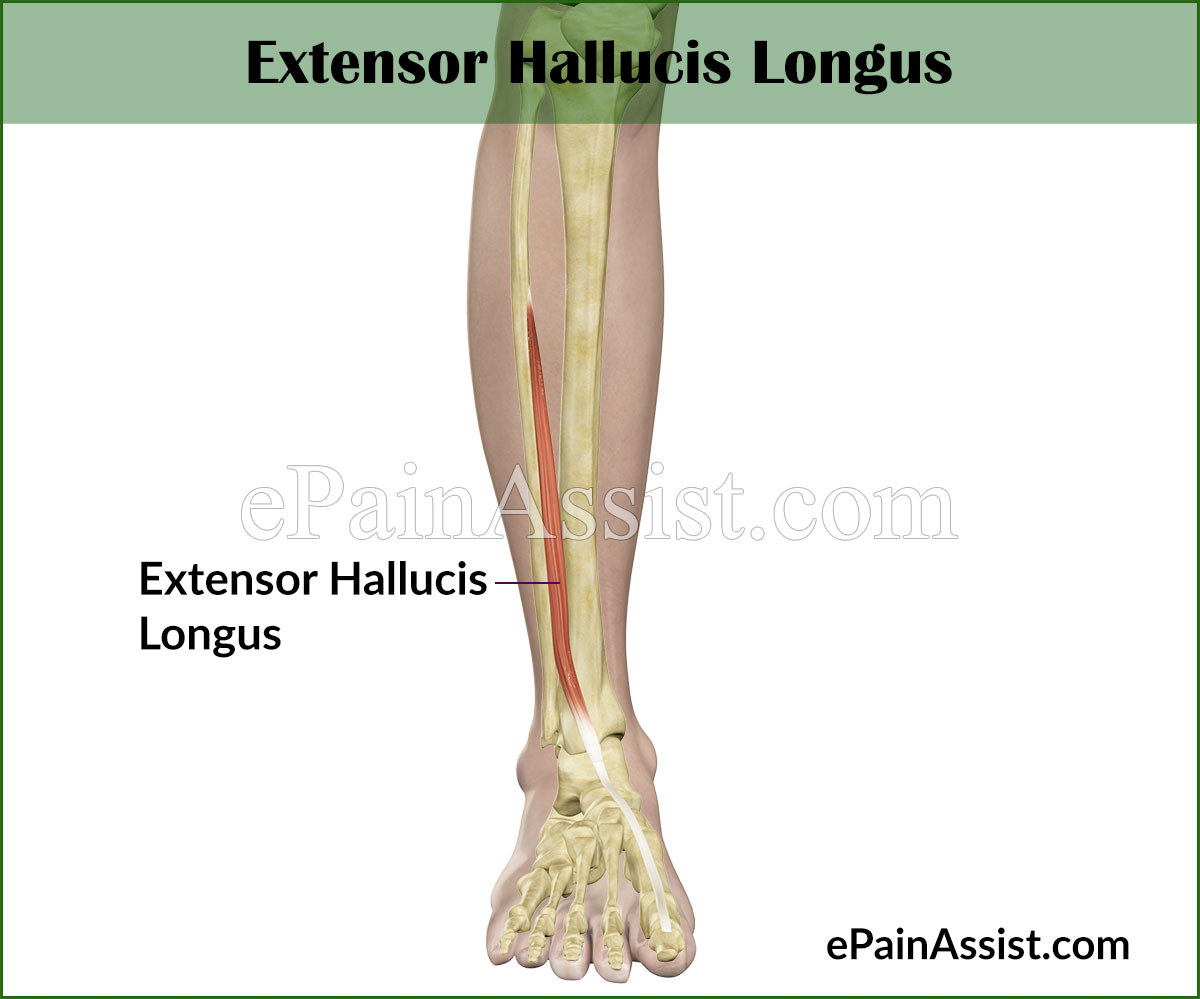What is Extensor Hallucis Longus and What is its Function?[1]
The Extensor Hallucis Longus muscle originates from the front portion of the calf bone. The main function of this muscle is to assist in extension of the big toe of the foot. This muscle also assists in dorsiflexion of the foot such that the toes get close to the shins. The Extensor Hallucis Longus muscle also helps with inversion of the foot. As stated, this muscle arises from the front part of the calf bone and extends till it enters the base of the large toe. This muscle is present between the tibialis anterior and extensor digitorum longus muscles. It is seen in some individuals that this muscle is joint with the extensor digitorum longus muscle. Oxygen is supplied to the Extensor Hallucis Longus muscle by the anterior tibial artery and this muscle is innervated by the deep fibular nerves. Any type of strain, injury, or damage to the Extensor Hallucis Longus muscle may lead to pain and decreased motion of the big toe. It may also affect ambulation of the affected individual making it more difficult for him or her to walk normally.

Signs and Symptoms of Extensor Hallucis Longus Strain[2]
Some of the symptoms which suggest that the Extensor Hallucis Longus muscle is strained are:
- Severe pain near the top of the foot around the toes
- The affected individual may find it difficult to raise the foot antigravity
- The patient may also feel numbness localized on the top of the foot
- The patient will feel severe pain in the big toe
- The patient will also experience frequent cramps in the foot
- There will also be visible deformities like hammertoes or clawtoe.
What can Cause Extensor Hallucis Longus Strain?[3]
Some of the normal activities that may result in Strained Extensor Hallucis Longus muscle are:
- Frequent stubbing of the toes.
- Soccer players who frequently kick the ball are at risk for developing extensor hallucis longus strain or injury.
- Professional cyclist who take part in long marathons and have to pedal the cycle for prolonged periods of time are also at increased risk for extensor hallucis longus strain.
- People who have to climb stairs often also may strain the Extensor Hallucis Longus muscle.
Risk Factors of Extensor Hallucis Longus Strain[4]
Some of the medical conditions that can result in Extensor Hallucis Longus Strain are:
- Diabetic neuropathy
- Hammertoes or clawtoe deformity
- Gout.
What is the Treatment for Extensor Hallucis Longus Strain?
Some of the treatments for Extensor Hallucis Longus Strain are:
Cold Therapy to Treat Extensor Hallucis Longus Strain: There are many forms of gels and cold packs available in the market and over the counter which can go a long way in helping with treatment of Strained Extensor Hallucis Longus Muscle. The gels that are available are normally used immediately after an injury or strain as it immediately cools the area and prevents swelling from developing in the area. Such gels or cold packs or coolants can help heal the Strained Extensor Hallucis Longus Muscle faster. The gel is used by rubbing it at the injured site up to the ankle.
Warm Therapy to Treat Extensor Hallucis Longus Strain: This type of therapy can also be used for treating Strained Extensor Hallucis Longus Muscle. This gel provides adequate warmth to the injured area without actually burning the area. It works fantastically well in relieving pain and stiffness associated with Extensor Hallucis Longus Strain. This gel needs to be put at the pain site as well as areas surrounding it for best results. It should be noted here that warm therapy should never be used when using ice packs or heat packs as this may result in blistering of the skin
Calf Muscle Brace and Support: These types of wraps are quite adjustable and help in providing support to the injured Extensor Hallucis Longus Muscle. These wraps are helpful in providing adequate compression and facilitate relaxation of the injured muscle to facilitate speedy healing from a strained Extensor Hallucis Longus Muscle.
Calf Compression Socks: The compression socks these days have become the go-to product for athletes and other professional sportsmen to prevent any type of injuries to the Extensor Hallucis Longus Muscle. These kinds of socks help prevent stiffness and soreness and also help with pain and inflammation. The fabric with which this sock is made up of keeps the skin dry. This type of compression sock helps a great deal when it comes to Extensor Hallucis Longus Muscle strains.
